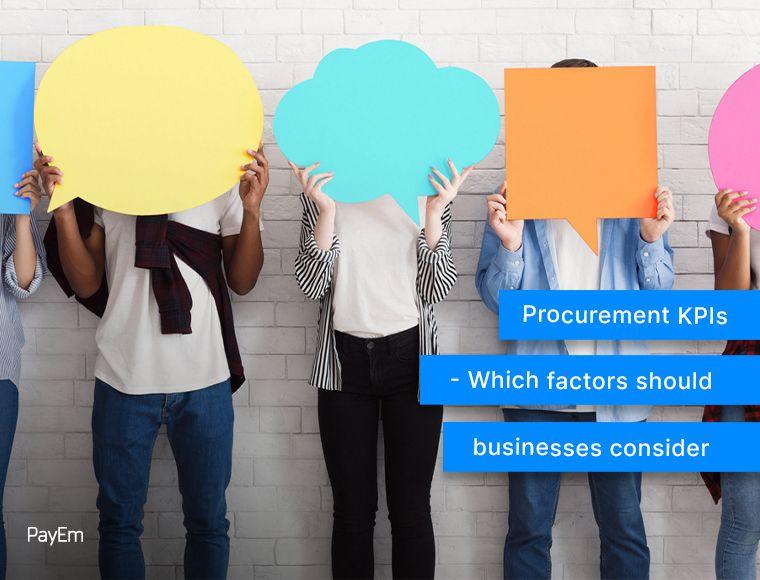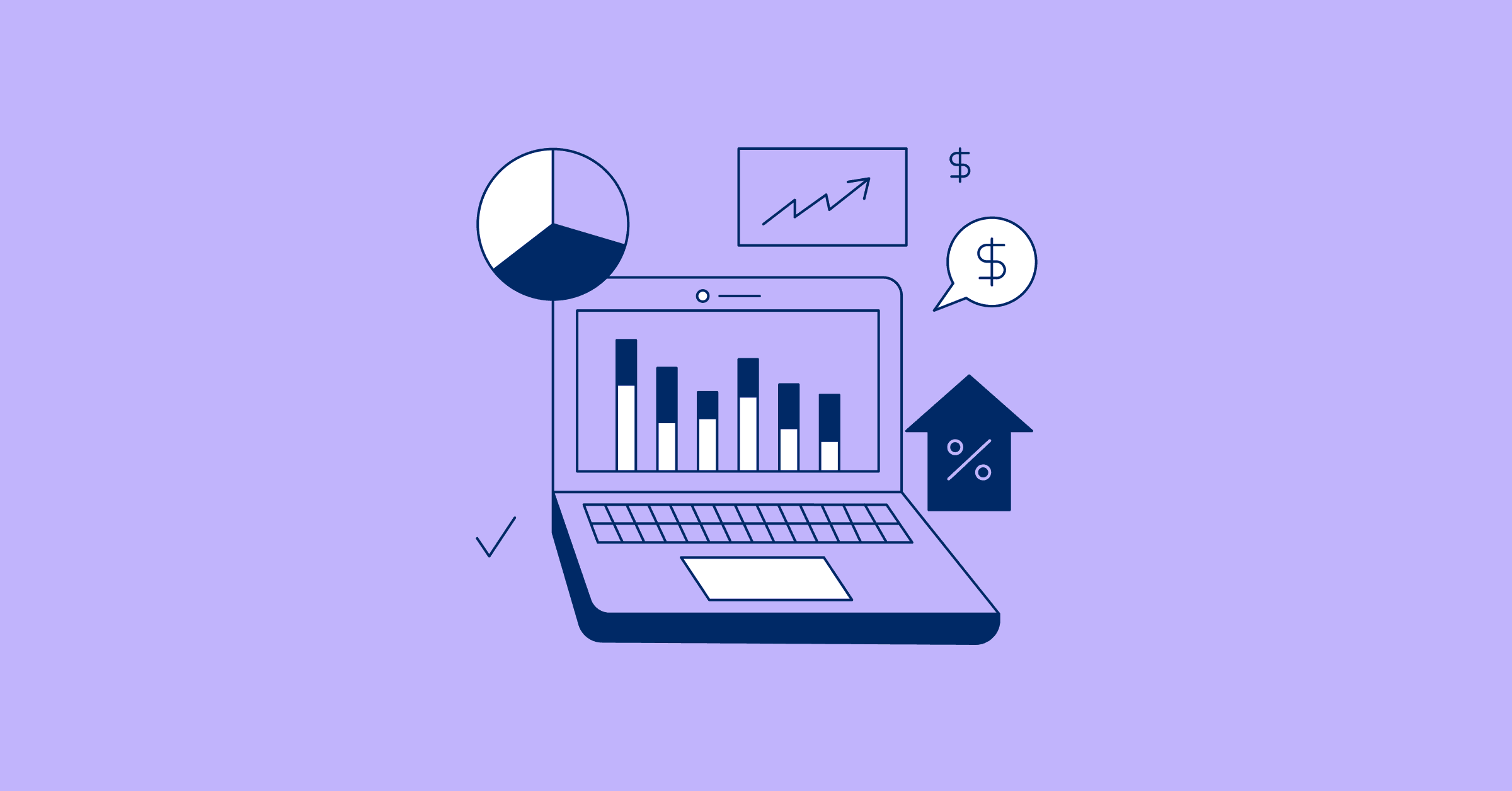November 03, 2022
Procurement KPIs – What factors should businesses consider?

Sign up for our newsletter
Stay informed with the latest trends and best practices in finance and procurement.

Procurement managers are tasked with the job of measuring key performance indicators (KPIs) to determine progress in an organization’s procurement system. It is not enough to simply outline objectives for the procurement process. Without the ability to analyze and measure critical metrics, it is challenging to determine whether or not you are accomplishing those objectives. It helps to be able to track results to see which areas of a business’ procurement cycle can be improved upon. Armed with this vital knowledge, procurement managers can make critical decisions and focus directives actionably to better obtain company goals.
This article will cover procurement KPIs and how they inform the procurement process:
- Introduction to KPIs
- How KPIs affect procurement
- KPI categorization
- The best procurement KPIs to track
- How businesses track procurement processes and their KPIs
How can KPIs affect procurement processes?
Procurement KPIs directly impact the procurement process as they act as a veritable compass, guiding the company’s direction towards better accomplishing value-driven objectives. As the very popular saying goes, “what gets measured, gets done.” In procurement cycles, this means that the ability to leverage automation to track progress is indispensable when making procurement-related decisions.
An integral component of a successful procurement system is the measurement of the metrics involved. By measuring and analyzing the data associated with procurement, a company can better understand its level of productivity and growth. The measurements are better known as KPIs (Key Performance Indicators) and are the critical element that denotes whether a business is moving forward or staying stagnant.
How are KPIs categorized?
There is a wide variety of KPIs that an organization can use to measure the results of their procurement systems. Honing in on what to measure is the best way a business can move forward when adjusting its procurement cycle. KPIs can be broken down into categories: Supplier KPIs, Staff KPIs, and Organizational KPIs. Taking a deeper look into these categories can shed light on what is measured when examining procurement KPIs.
Supplier KPIs
Supplier performance is one of the most critical performance indicators to measure when auditing procurement processes. Crucial supplier KPIs include those related to service levels, product or service quality, and compliance.
Staff KPIs
When considering the monitoring of staff KPIs, procurement leaders will need to analyze key data to determine the cost-effectiveness of certain processes. These include calculating and analyzing spend per employee, spend under contract, time spent in training and development, and more. Other important staff KPIs include cost savings or avoidance, purchase order cycle time, and lead time.
Organizational KPIs
Procurement KPIs concerning organizational spend involve analyzing key data related to organizational processes. These encompass spend under management, inventory turnover, inventory accuracy, ratio of spend to revenue, and procurement ROI.
What are the best KPIs to track?
1. Cost Savings
Cost savings are typically the primary goal for most procurement management professionals. Cost savings can be optimized by renegotiating contracts, consolidating contracts, and assessing delivery costs, along with other methods of aggregate savings on a company-wide basis. By tracking cost-saving KPIs, you can better determine whether you need to change vendors to obtain a lower price point on products and services.
Cost Savings Procurement KPIs include:
- Cost avoidance
- Cost reduction
- Savings
- Cost development
- Purchase price variance
2. Spend KPIs
When examining spend KPIs, it is helpful to consider what percentage of the spend is visibly flowing through the procurement cycle and which portion cannot be managed.
Spend Procurement KPIs include:
- Spend under management
- Maverick spend
- Contribution to total spend
3. Contract KPIs
Contract KPIs are another of the most crucial procurement KPIs to consider. Factors such as whether or not the company (or startup) is paying the agreed-upon prices will need to be measured, no matter if goods are procured from the United States or from overseas. A procurement manager will want to examine whether or not they are receiving the service or product quality promised to ensure contract terms are adhered to.
Contract KPIs include:
- Contract loyalty
- Contract coverage
- Contract prices and compliance
4. Procurement ROI
Tracking the value add of your procurement system is key to measuring their effectiveness and overall cost savings. If there are specific procurement actions that are costing the company, tracking is essential in order to make the proper adjustments. Procurement KPIs related to return on investment are critical metrics to analyze to determine their overall value.
Procurement ROI KPIs include:
- Amount spent on procurement compared with returns
- Number of procurement processes
- Time expenditure from staff to complete the procurement cycle
5. Supplier KPIs
Supplier KPIs provide procurement leaders with visibility into the cost-effectiveness of certain supplier processes within the procurement system. Some of the key insights gleaned by analyzing supplier KPIs include whether or not you are obtaining contract compliance goals, product value, and the number of suppliers and related spend.
Supplier KPIs include:
- Quality performance metrics related to delivery, quality, price, and service
- Number of suppliers and supplier spend
- Percentage of suppliers as it relates to total spend
How do businesses track procurement processes and their KPIs?
The gargantuan task of tracking a multitude of KPIs across several different areas of the company simply can not be completed manually. Automated systems are available that can assist with efficiently tracking critical data and compiling reports for easier procurement KPI management.
One such system is offered by PayEm, one of the leading procurement management software available. At PayEm, every aspect of the procurement process is seamlessly managed. The robust and dynamic platform offers procurement leaders the tools they need to effortlessly track spend and analyze procurement KPIs. Effectively managing procurement from request to reconciliation is simplified with PayEm.
PayEm’s Request to Reconciliation Procurement management system offers everything in one place so users can:
- View real-time spend data to stay within budget
- Streamline payments according to company spend objectives
- View PO usage and budget metrics
- Utilize a customized approval flow
- Enjoy in-platform communication
- Automate approvals
Contact PayEm’s experts to book a commitment-free, no-cost demo of the platform today.


